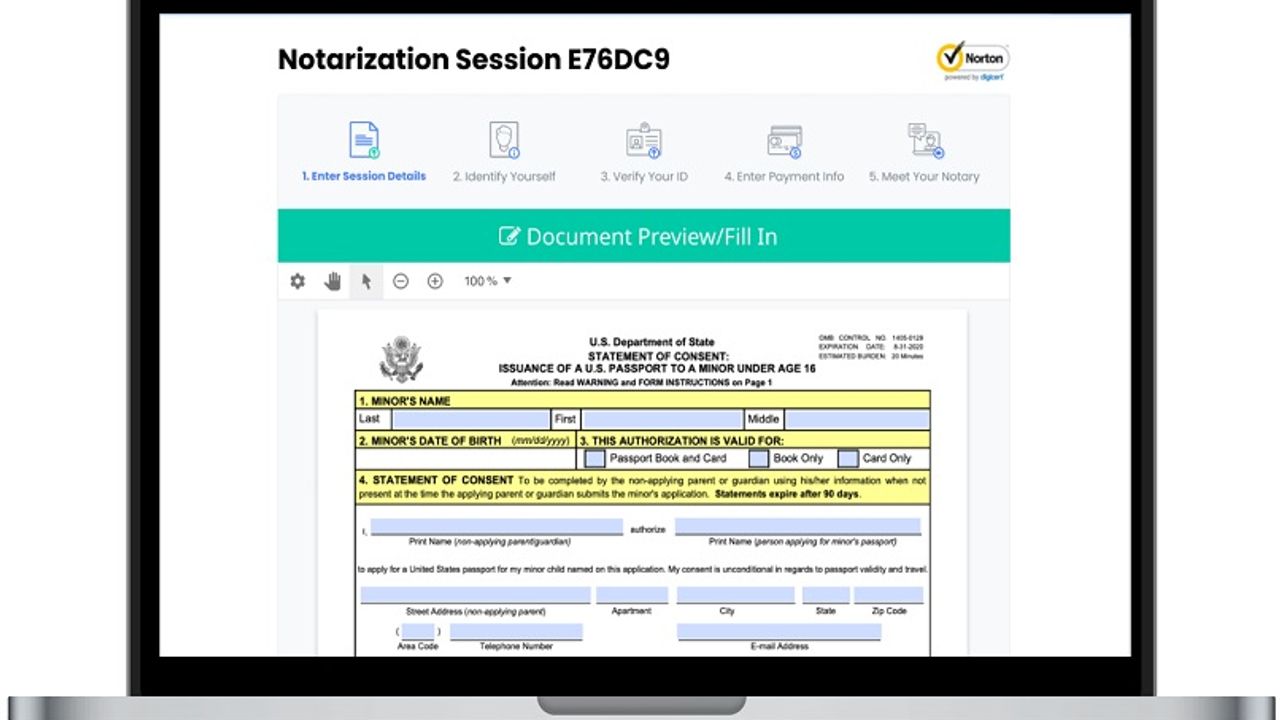The United States Department of State requires the DS-3053 Statement of Consent to be completed when a minor under the age of 16 applies for a passport and only one parent or legal representative may attend in person with the child. This form is used to get permission from a legal or parental representative who is not applying for a passport for a minor. If a juvenile under the age of 16 cannot obtain written approval from both parents or guardians or if the child does not satisfy the requirements for a passport without parental consent, the U.S. Department of State will not grant the minor a passport. Hence, in order to prevent any delays in getting a passport for the child, it is crucial to fill out and notarize form DS3053 (https://onenotary.us/ds-3053-form-passport-parental-consent/) correctly and in a timely way.
Mistakes often made on the DS3053 form
Common mistakes made by applicants when completing the DS3053 include the following:
- Incorrect or missing data. In order to avoid delays or rejection, it is necessary to complete the form in its whole and with precision.
- Invalid or out-of-date identification. The person providing the notarized declaration must be in possession of a valid, current picture ID issued by the government.
- Notarization that lacks necessary details. The notary is in charge of completing the form and verifying the signature.
- Parental or legal representative consent was not obtained or was granted improperly. Any guardians or parents who are not applying themselves must also sign the document.
- Insufficient or no supporting evidence was provided. Any required documentation, such as a copy of your birth certificate and a recent passport photo, must be included with your application.
- Issues with delivery. It is required that the form and any attachments be provided in a manner that enables tracking of the submission.
It is necessary to read the instructions on the DS3053 form carefully and stick to them in order to avoid making the common mistakes that are stated above.
Notarizing a DS-3053 form guidelines
Below are the necessary procedures for notarizing a DS3053 form:
- Get a notary public. You may locate a notary public at any financial institution, post office, or UPS location.
- Fill out a DS3053 and have proper identification with you. Bring the completed DS3053 form, together with a government-issued picture ID that includes your signature and photo.
- In the presence of the notary, sign the document. The DS3053 form must be signed in the presence of a notary public.
- Provide the required details. In order to finish the notarization procedure, the notary public will ask for your name, address, and other identifying information.
- Make the required payment. Notarization services are subject to a cost.
- Get the DS3053 form notarized. The notary public's signature and official seal are the last steps in the notarization procedure. Your DS3053 form has been notarized and is now complete for submission.
The notary public cannot provide you with advice on the form's legality or assist you fill it out. They will only be able to attest to your identification and see you sign documents.
If the signer is unable to appear in person before a notary public, the DS3053 form may be notarized by a remote notary who is legally able to execute remote online notarizations in the signer's state. A black ink pen, the notary's seal and signature, and the notary's completion of a jurat certificate are all required by the U.S. Department of State in order to properly notarize a DS3053. For the notarization to be legally binding, the remote notary must follow these procedures.










